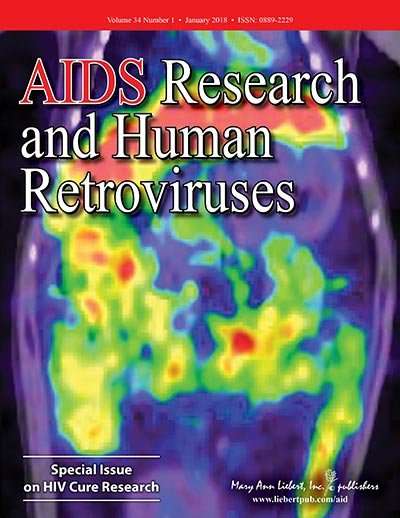Progress toward an HIV cure in annual special issue of AIDS Research & Human Retroviruses

Researchers have shown that despite effective combined antiretroviral therapy (cART), HIV can hide in the spleen of patients with no detectable HIV in their blood. The study confirming the spleen as an HIV sanctuary is part of a comprehensive collection of articles describing the broad scope and current status of the ongoing global effort toward an HIV cure, published in the fourth annual Special Issue on HIV Cure Research of AIDS Research and Human Retroviruses.
David Nolan, BioInforExperts (Thibodaux, LA) and University of Florida (Gainesville) and colleagues from University of California Los Angeles David Geffen School of Medicine and University of California at San Francisco coauthored the article entitled "The Spleen Is an HIV-1 Sanctuary During Combined Antiretroviral Therapy." The researchers used advanced technology, including single genome sequencing and droplet digital polymerase chain reaction (ddPCR) capable of identifying very small amounts of viral DNA in tissue samples from HIV-infected individuals.
In the article "Natural Products and HIV/AIDS," Daniele Cary and B. Matija Peterlin, University of California at San Francisco discuss the many effective therapeutic compounds derived from natural products, including those able to suppress HIV and reactivate latent virus, as well as a recent report of a combination of 13 traditional Chinese herbs capable of achieving a functional cure.
"If We Build It, Will They Come? Perceptions of HIV Cure-Related Research by People Living with HIV in Four U.S. Cities: A Qualitative Focus Group Study" is the title of an article by Laurie Sylla et al. from defeatHIV Community Advisory Board (Seattle, WA), Project Inform and Delaney AIDS Research Enterprise (DARE) CAB (Los Angeles, CA), amfAR Institute for HIV Cure Research CAB and Collaboratory of AIDS Researchers for Eradication (CARE) CAB, (Palm Springs, CA), The University of North Carolina at Chapel Hill, and University of California at San Francisco School of Medicine. The authors provide valuable insights and perspectives on how people living with HIV view both a functional cure and a sterilizing or eradicating cure. The differences, and skepticism about whether medicine will be able to eliminate HIV from the body, can affect patients' willingness to participate in the HIV cure studies needed to advance biomedical research.
"The 2018 Special Issue on HIV Cure Research contains an excellent cross section of research activity in the field, capturing the current debates and discussions driving the field," says Thomas Hope, PhD, Editor-in-Chief of AIDS Research and Human Retroviruses and Professor of Cell and Molecular Biology at Northwestern University, Feinberg School of Medicine (Chicago, IL). "The questions relating to how a cure would impact the lives of people living with HIV/AIDS is especially interesting and informative. It is surprising that many are not necessarily excited that a functional cure for HIV would improve their lives."





















